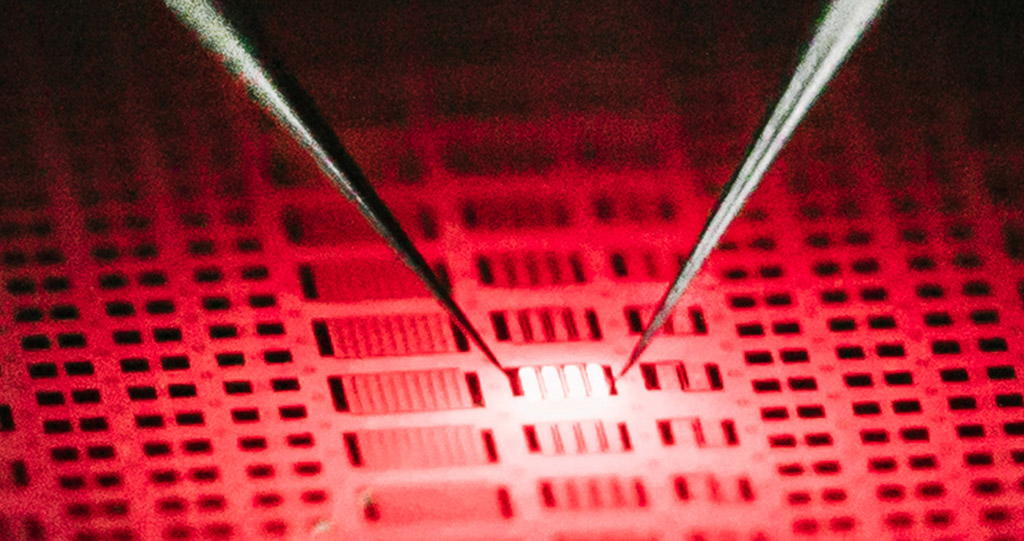News: LEDs
11 May 2021
KAUST fabricates red InGaN-based micro-LEDs
Saudi Arabia’s King Abdullah University of Science and Technology (KAUST) has reported indium gallium nitride (InGaN)-based red micro-LEDs that they plan to integrate with green and blue micro-LEDs to create full-color micro-displays (Zhuang Z, Iida D and Ohkawa K, ‘Investigation of InGaN-based red/green micro-light-emitting diodes’, Optics Letters 46, 1912-1915 (2021)).
Nitride semiconductors can be used to make blue and green micro-LEDs, whereas phosphide semiconductors are currently used for red light. But combining different semiconductors in this way makes construction of RGB micro-LEDs more difficult and expensive. Also, the efficiency of phosphide micro-LEDs falls significantly with shrinking chip size.
Red-light-emitting InGaN can be created by increasing the materials’ indium content. But this tends to lower the efficiency of the resulting LED because there is a mismatch between the separation of atoms in the GaN and InGaN crystal lattices, which causes atomic-level imperfections. Moreover, damage to the sidewalls of an InGaN micro-LED induced during the fabrication process makes the new device less efficient. “But we have a chemical treatment to remove the damage and retain the high crystal quality of the InGaN and GaN sidewall interface,” says Zhuang.

Picture: The 47μm-long red-emitting nitride-based micro-LEDs fabricated by KAUST. © 2021 KAUST; Anastasia Serin.
Zhang’s team created and characterized a series of square devices with a side length of 98μm or 47μm. Their 47μm-long devices emitting light at a peak wavelength of 626nm were shown to have an external quantum efficiency (the number of photons emitted from the LED per electron injected into the device) of up to 0.87%. Also, the color purity of the red micro-LED is optimum because it is very close to the primary red color defined by the industrial standard known as Rec. 2020.
“The next step is to increase the efficiency of the red micro-LED with even smaller chip sizes, maybe below 20μm,” says Zhuang. “Then we hope to integrate RGB nitride-based LEDs for full-color displays.”
ALLOS and KAUST co-developing high-efficiency nitride-based red LEDs on silicon








